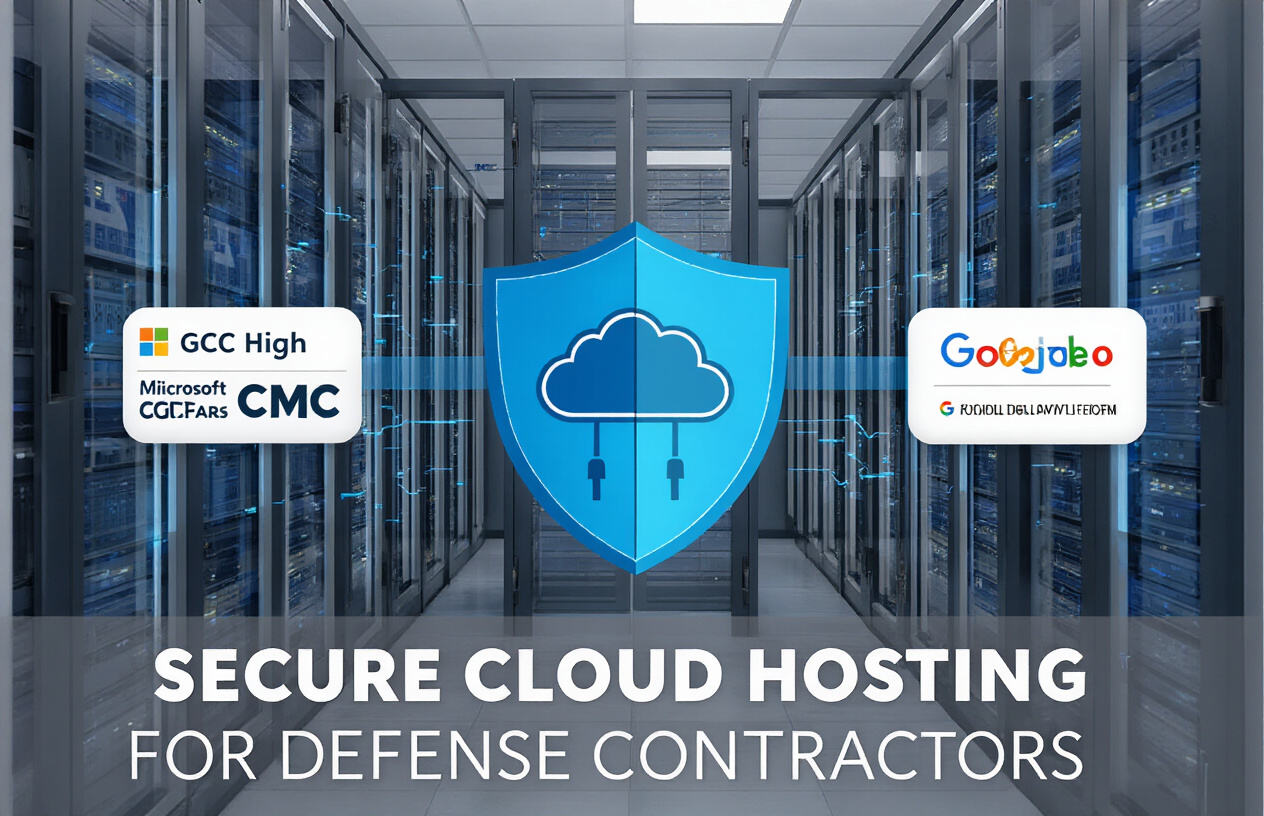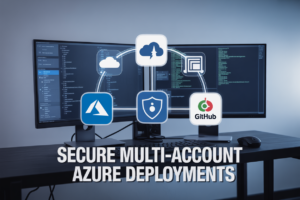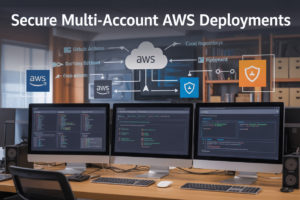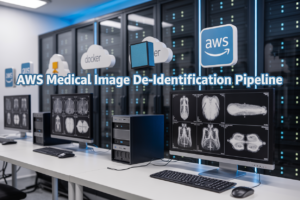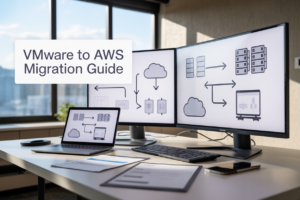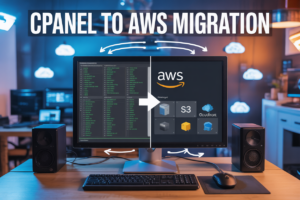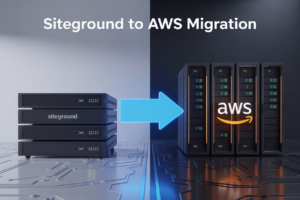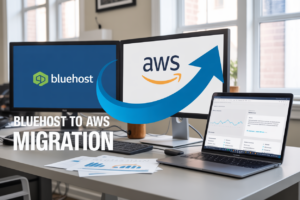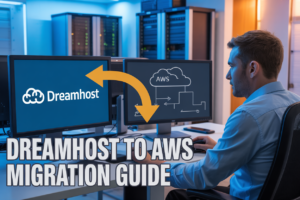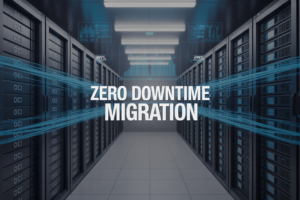Ever wonder what keeps defense contractors up at night? It’s not just project deadlines or competition—it’s the constant pressure of maintaining DFARS and CMMC compliance while still running an efficient operation.
Let’s be real: navigating these specialized compliance requirements feels like trying to solve a Rubik’s cube blindfolded. One wrong move and you’re facing penalties, lost contracts, or worse.
That’s where GCC High and GCP secure cloud hosting solutions come in. These aren’t just fancy tech terms—they’re purpose-built environments that make compliance dramatically simpler while still giving you the cloud capabilities your business needs.
But here’s what most vendors won’t tell you about these platforms until after you’ve signed the contract…
Understanding DFARS and CMMC Compliance Requirements
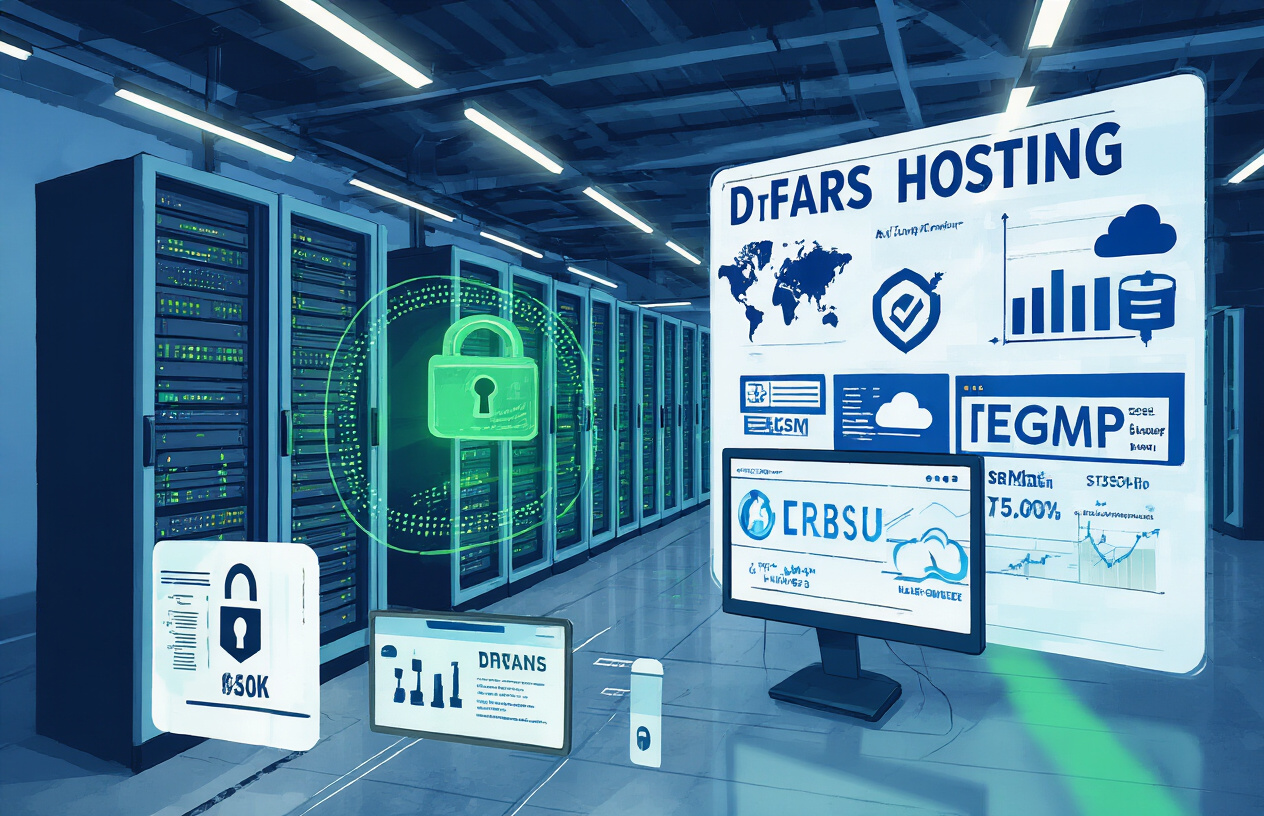
A. Key DFARS cybersecurity provisions explained
Defense contractors constantly juggle complex regulations, and DFARS 252.204-7012 stands out as particularly demanding. This provision requires safeguarding Controlled Unclassified Information (CUI) using NIST SP 800-171 security controls.
In plain English? You need 110 specific security measures covering everything from access control to system protection. The most challenging aspects include:
- Implementing multi-factor authentication
- Encrypting CUI at rest and in transit
- Continuous monitoring for security incidents
- Formal incident response procedures
The provision also mandates rapid reporting of cyber incidents (within 72 hours) and preserving affected systems for DoD investigation.
What trips up most contractors is the flow-down requirement. You must push these same security requirements to your subcontractors who handle CUI. Yes, even your smallest vendors.
B. CMMC levels and their implementation timelines
The Cybersecurity Maturity Model Certification isn’t a one-size-fits-all approach. It establishes three progressive levels:
Level 1: Foundational
- 17 security practices
- Basic cyber hygiene
- Primarily protects Federal Contract Information (FCI)
- Implementation: Required for some contracts starting 2023
Level 2: Advanced
- 110 security practices (maps to NIST 800-171)
- Protects CUI
- Implementation: Rolling out 2023-2025 for critical contracts
Level 3: Expert
- 110+ practices (adds more security controls)
- For contractors handling the most sensitive information
- Implementation: Timeline still evolving, expected 2025-2026
The DoD is phasing in CMMC requirements gradually through contract solicitations. Don’t wait – assessments take months of preparation.
C. Penalties and risks of non-compliance
The stakes couldn’t be higher. Non-compliance isn’t just about losing contracts – though that’s definitely happening.
Financial penalties can be severe:
- False Claims Act violations (claiming compliance when you’re not): up to 3x damages plus penalties
- Contract termination and suspension from future DoD contracts
- Legal fees and remediation costs averaging $3-5 million for medium-sized contractors
Beyond monetary impacts, there are reputation risks. The DoD publishes information about contractors who’ve experienced breaches or failed assessments.
The hidden costs hit hardest – remediation under pressure costs 3-4x more than planned security investments. And security incidents themselves? The average data breach in defense contracting exceeds $8.5 million in damages.
The bottom line: compliance isn’t optional if you want to stay in the defense business. More contractors are losing contracts each quarter due to security shortfalls than from performance issues.
GCC High: Microsoft’s Solution for Defense Contractors

What makes GCC High different from commercial Office 365
GCC High isn’t just a fancy name slapped onto regular Office 365. It’s a completely separate environment built from the ground up for defense contractors who need serious compliance capabilities.
The biggest difference? GCC High lives in dedicated Azure Government datacenters that are physically isolated from commercial cloud customers. Only US citizens can access the backend infrastructure. That’s not marketing talk – it’s a fundamental architectural difference.
While commercial Office 365 gives you features first (often weekly updates), GCC High prioritizes security and compliance over having the shiniest new tools. Updates roll out more slowly because they undergo additional security scrutiny.
Another major difference is encryption. GCC High uses different encryption keys that Microsoft cannot access, unlike commercial Office 365 where Microsoft maintains access to encryption keys for support purposes.
Built-in compliance features for DFARS requirements
Defense contractors know the DFARS 7012 clause isn’t optional. GCC High was purpose-built to meet these requirements without making you cobble together complex solutions.
The platform handles the tough requirements like:
- Incident reporting to DoD within 72 hours
- Preservation and protection of forensic images
- Enhanced protection of Controlled Unclassified Information (CUI)
- FIPS 140-2 validated cryptography
GCC High’s security features align perfectly with NIST 800-171 controls, which form the backbone of both DFARS compliance and CMMC certification. The platform’s documentation maps directly to these controls, saving your compliance team countless hours.
US Person support and data sovereignty benefits
When you’re dealing with sensitive defense information, knowing exactly who has access to your data matters. With GCC High, all support personnel are screened US Persons – not just anyone with the right technical credentials.
This US Person support isn’t just a policy – it’s baked into the platform’s architecture. Your data never leaves US soil, period. The platform maintains complete data sovereignty with:
- Physical datacenter locations exclusively in the continental US
- Background-checked US citizens managing infrastructure
- No foreign government access capabilities (even with legal requests)
For defense contractors, this eliminates massive compliance headaches around data locality and access controls that would otherwise require complex legal and technical workarounds.
Cost considerations and licensing model
No sugar-coating here – GCC High costs more than commercial Office 365. Expect to pay roughly 30-40% more per license compared to equivalent commercial plans.
The licensing model is also less flexible. Microsoft requires a minimum commitment (typically 500+ seats), though smaller organizations can purchase through authorized partners who aggregate licenses.
The pricing structure includes:
| Feature | Commercial O365 | GCC High |
|---|---|---|
| Minimum users | No minimum | 500+ (direct) |
| Price premium | Baseline | ~35% higher |
| License terms | Monthly options | Annual commitment |
| Add-ons | À la carte | Often bundled |
Beyond the direct licensing costs, factor in implementation expenses. Migration to GCC High typically requires specialized partners familiar with the platform’s unique security requirements, adding to the total project cost.
Despite the higher price tag, most defense contractors find GCC High cost-effective when compared to building equivalent compliance capabilities themselves. The alternative? Developing custom security controls and documentation that would cost far more in both dollars and headaches.
Google Cloud Platform (GCP) for Defense Industrial Base
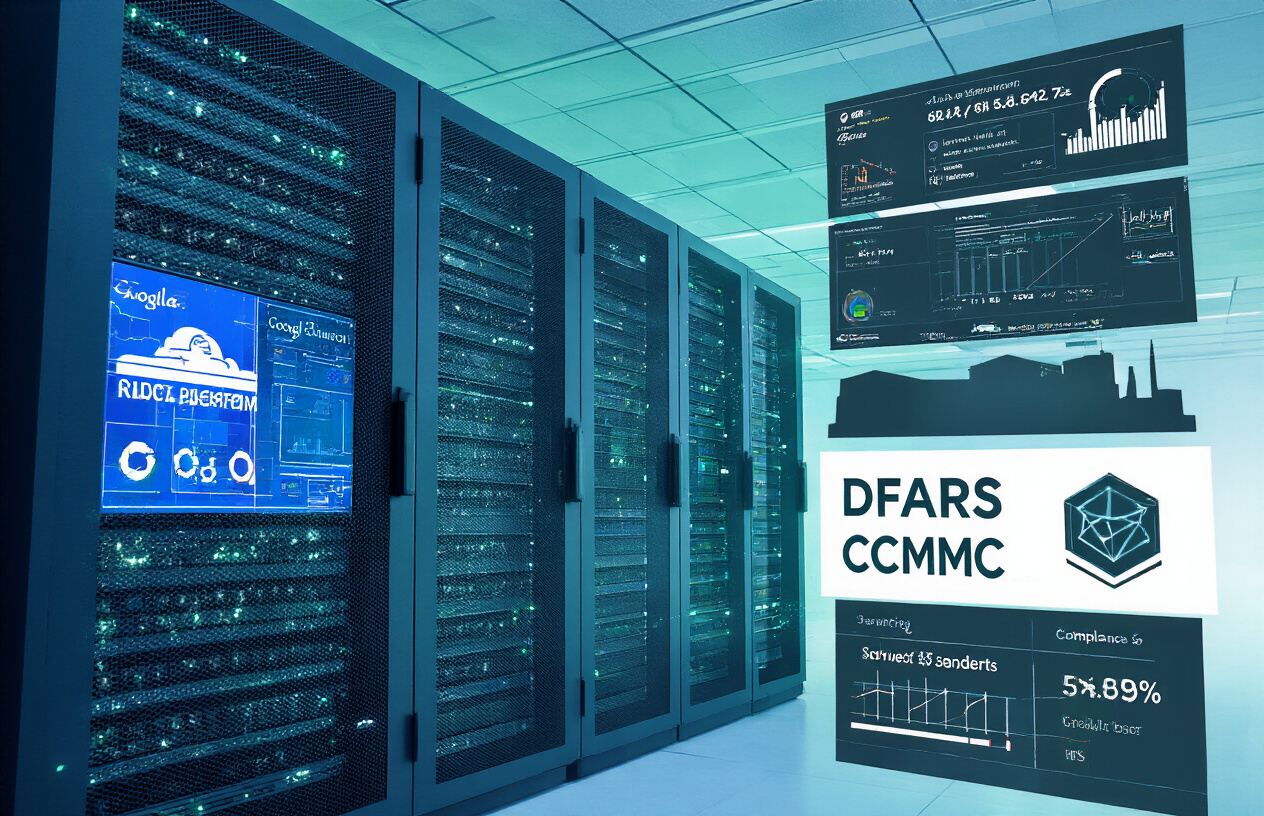
GCP’s compliance certifications for defense contractors
The defense industry has unique needs, and Google knows it. That’s why GCP offers a robust set of certifications that defense contractors can rely on. GCP maintains FedRAMP High authorization—the gold standard for government workloads. This isn’t just another certification on the wall; it represents Google’s commitment to meeting the strictest security controls the feds require.
But GCP doesn’t stop there. They’ve also secured ISO 27001, 27017, and 27018 certifications, covering information security management, cloud security, and personal data protection. For defense contractors juggling DFARS and CMMC requirements, these certifications provide a solid foundation.
Security features that satisfy CMMC requirements
CMMC compliance isn’t a walk in the park, but GCP makes it more manageable with built-in security tools that map directly to requirements:
- VPC Service Controls: Creates invisible security perimeters around sensitive data
- Cloud Key Management Service: Gives you control of encryption keys (a big CMMC checkmark)
- Security Command Center: Provides continuous monitoring and threat detection
- Access Transparency: Shows you exactly who accessed your data and why
These tools aren’t afterthoughts—they’re baked into GCP’s architecture. Many defense contractors find GCP’s security automation particularly helpful, as it reduces the human error factor that often leads to compliance issues.
Data residency controls and sovereignty guarantees
Defense work demands knowing exactly where your data lives. GCP answers this with rock-solid data residency options:
GCP’s regional deployment model lets you specify exactly which geographic location houses your data. For defense contractors, this means keeping sensitive information within US borders—a non-negotiable for many DFARS requirements.
The platform’s Assured Workloads feature creates environments specifically designed for controlled unclassified information (CUI), with enforced personnel access controls. This means only US persons handle your sensitive defense data.
Unlike some cloud providers, GCP offers clear data sovereignty guarantees in writing. Their contractual commitments specify that your data remains under US jurisdiction, preventing foreign government access concerns that keep compliance officers up at night.
Choosing Between GCC High and GCP

A. Comparison of security capabilities
GCC High and GCP both offer robust security features, but they approach compliance differently. GCC High is purpose-built for defense contractors with DFARS requirements baked in from the ground up. It includes US person support, specialized encryption, and dedicated infrastructure that’s physically separate from commercial clouds.
Google Cloud Platform takes a more customizable approach. While not specifically designed for defense work, GCP can be configured to meet CMMC requirements through its robust security controls. Their Assured Workloads feature helps automate compliance configurations, though you’ll need to layer additional controls to fully satisfy DFARS requirements.
The key differences come down to:
| Feature | GCC High | GCP |
|---|---|---|
| Default DFARS compliance | Yes | Partial (requires configuration) |
| US-based support | Guaranteed | Available as option |
| Physical separation | Complete | Logical separation |
| Encryption | FIPS 140-2 by default | Configurable to FIPS 140-2 |
| Documentation | DoD-focused | Broader compliance focus |
If your organization needs turnkey DFARS compliance with minimal configuration, GCC High wins. If you need flexibility and are willing to implement additional controls, GCP might be the better choice.
B. Integration with existing systems and workflows
The integration question is where many organizations stumble in their decision-making process.
GCC High works seamlessly with Microsoft products you’re probably already using. If your team lives in Office 365, the transition feels natural. However, you’ll face a completely separate tenant from your commercial Microsoft environment, which means duplicating certain configurations and potentially managing two separate environments.
GCP shines in hybrid deployments and works particularly well if you’re already using other Google services. Its open API approach makes integration with non-Google services straightforward, though you’ll need technical expertise to configure these connections securely.
What’s often overlooked is the impact on daily workflows. Moving to GCC High typically requires more user retraining since the environment differs from commercial Microsoft offerings in subtle but important ways. GCP’s interface remains consistent regardless of compliance requirements.
C. Total cost of ownership analysis
Let’s talk money. GCC High comes with a premium price tag—typically 2-3x the cost of commercial Microsoft 365. You’re paying for specialized compliance features, but also for the limited market competition in this space.
Initial pricing for GCP often appears more attractive, but the true cost emerges when adding all the components needed for complete DFARS compliance. You’ll need:
- Assured Workloads (premium feature)
- Enhanced support packages
- Third-party security tools for gaps
- Specialized consulting services
Hidden costs lurk in both options. With GCC High, license minimums and limited flexibility can inflate costs. With GCP, ongoing compliance management and potential rework if requirements change can add up quickly.
The cost comparison isn’t just about license fees. Consider:
- Implementation costs (higher for GCP in most cases)
- Training expenses (similar for both)
- Ongoing compliance management (typically lower for GCC High)
- Scaling costs as your organization grows
D. Migration complexity considerations
Migration to either platform isn’t a weekend project. The complexity varies dramatically based on your starting point.
For GCC High, the most straightforward path comes from organizations already using Microsoft products. Even then, you’re looking at:
- Complete tenant migration
- Reconfiguring all security settings
- Possible data migration challenges
- User retraining on subtle differences
GCP migrations typically involve more technical lift but offer more flexibility in implementation approaches. The key challenges include:
- Architectural redesign for DFARS compliance
- Building equivalent security controls
- Developing new operational procedures
- Potentially more extensive user retraining
The timeline difference is significant. Most GCC High migrations take 3-6 months, while GCP implementations for DFARS compliance typically run 6-12 months for similar-sized organizations.
Neither option offers a painless migration, but GCC High provides a more predictable path for Microsoft-centric organizations.
E. Support for future compliance requirements
Compliance isn’t static—and your cloud platform needs to evolve as requirements change.
GCC High benefits from Microsoft’s deep relationship with DoD and federal agencies. When new requirements emerge, Microsoft typically provides prompt updates and clear guidance. Their roadmap explicitly addresses defense requirements, giving you visibility into future compliance features.
GCP takes a broader approach to compliance. While Google actively updates their compliance capabilities, defense-specific requirements sometimes take longer to address. The advantage is flexibility—Google’s infrastructure allows for more custom approaches to new requirements.
What’s certain is that CMMC requirements will continue evolving. Version 2.0 is just the beginning. Your choice should consider not just today’s requirements but the platform’s adaptability to tomorrow’s regulatory landscape.
Both platforms will likely meet future requirements, but GCC High typically provides a more streamlined path with less organizational effort for defense contractors.
Implementation Best Practices

Assessment and planning strategies
Moving to GCC High or GCP isn’t a “flip the switch” kind of project. Smart defense contractors start with a thorough assessment of what they have and where they need to go.
First, inventory everything – systems, data types, workflows, and compliance gaps. Got CUI data scattered across regular commercial clouds? That’s a common problem we need to fix.
Map your current compliance status against DFARS 7012 and CMMC requirements. The gap between where you are and where regulations need you to be? That’s your roadmap.
Budget realistically. GCC High implementations typically run $50K-$250K depending on organization size and complexity. GCP implementations can vary widely too.
Timelines matter. Most successful migrations take 3-6 months from planning to completion. Rushing leads to mistakes. Taking too long creates security vulnerabilities.
Migration pathways with minimal disruption
Nobody wants their business grinding to a halt during migration. Here’s how to keep things running:
Phase your approach. Start with non-critical systems, then move to more sensitive workloads once you’ve worked out the kinks.
Parallel environments work wonders. Run your old and new environments simultaneously during transition, then cut over when everything’s tested.
Weekend migrations for critical systems minimize business impact. Have your team ready for immediate troubleshooting.
Communication plans are non-negotiable. Everyone from leadership to end users needs to know what’s happening and when. Surprises are your enemy.
Rollback options should always exist. If something goes sideways, you need a way back to working systems.
Security configuration guidelines
The security settings that worked in commercial cloud won’t cut it here. Both GCC High and GCP require specific configurations:
For GCC High:
- Enable Conditional Access policies that restrict access based on location, device compliance, and risk factors
- Implement proper license assignment (remember: standard Microsoft 365 licenses don’t work here)
- Configure Azure Information Protection for CUI data labeling
- Set up Multi-Factor Authentication for all accounts – no exceptions
For GCP:
- Implement VPC Service Controls to create security perimeters
- Configure Cloud KMS for FIPS 140-2 validated encryption
- Deploy Access Transparency and Access Approval for all admin actions
- Set up Cloud Audit Logs with proper retention policies
Whichever platform you choose, document your configurations thoroughly. During an assessment, you’ll need to prove your settings meet requirements.
Ongoing compliance management processes
Compliance isn’t a one-and-done checkbox. It’s living, breathing work that continues long after implementation.
Regular security assessments should happen quarterly at minimum. Technology and threats evolve constantly.
Document everything. Your future self (and auditors) will thank you for keeping detailed records of configurations, changes, and security decisions.
Train your people repeatedly. The most secure cloud setup in the world falls apart when users don’t understand security practices.
Monitor continuously for unusual activity. Both platforms offer robust logging – use it to spot potential issues before they become problems.
Establish a formal review cycle for all security policies. Schedule quarterly reviews to catch any drift between your configurations and compliance requirements.
Stay current on regulatory changes. CMMC requirements continue to evolve – what’s compliant today might not be tomorrow.
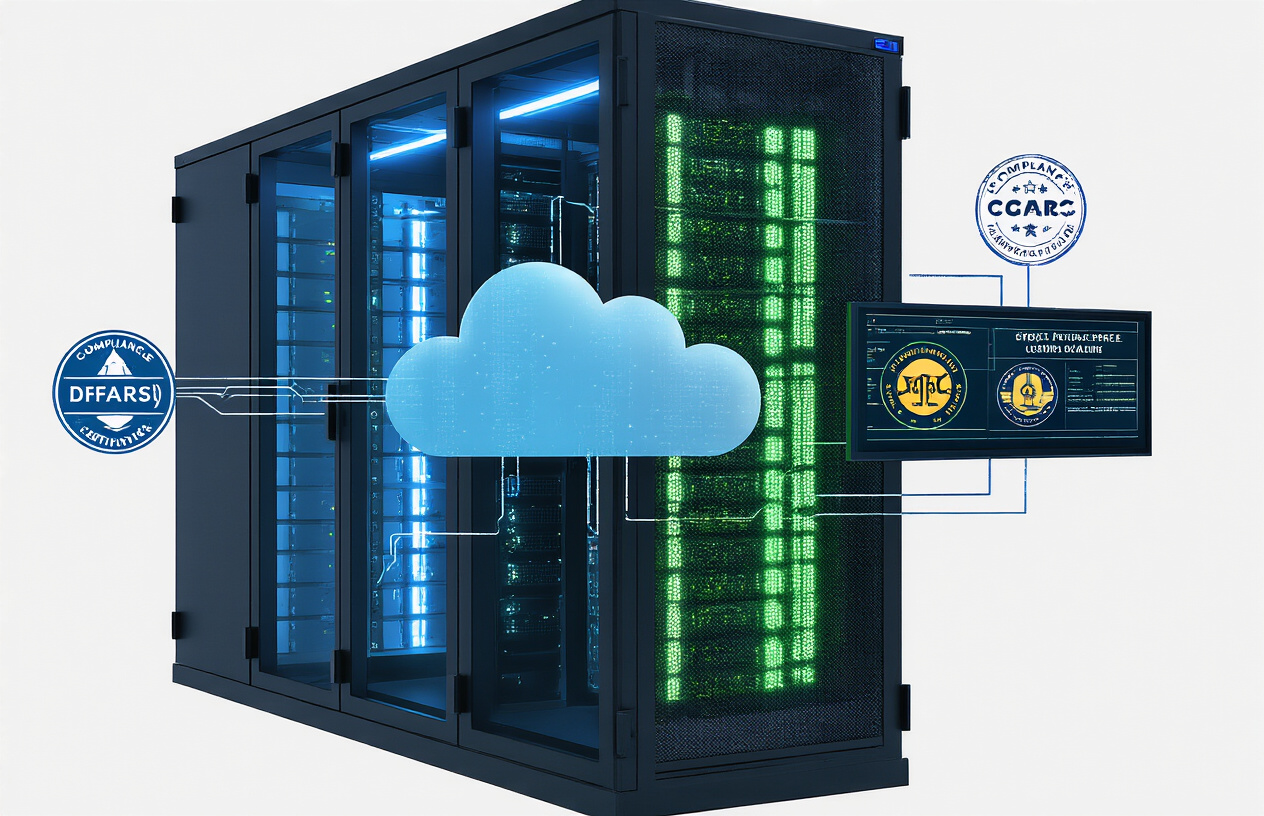
A Secure Path Forward
Navigating DFARS and CMMC compliance doesn’t have to be overwhelming when you leverage purpose-built cloud solutions like Microsoft GCC High and Google Cloud Platform. Both platforms offer robust security features tailored to defense contractors, with GCC High providing a more defense-specific environment and GCP offering flexibility with strong security controls. Your choice ultimately depends on your organization’s specific needs, existing infrastructure, and compliance requirements.
Remember that compliance is an ongoing journey, not a destination. Whichever platform you choose, follow implementation best practices including regular security assessments, comprehensive training, and staying updated on regulatory changes. By thoughtfully selecting and properly implementing either GCC High or GCP, your organization can achieve and maintain the necessary compliance while focusing on your core mission of supporting national security.










